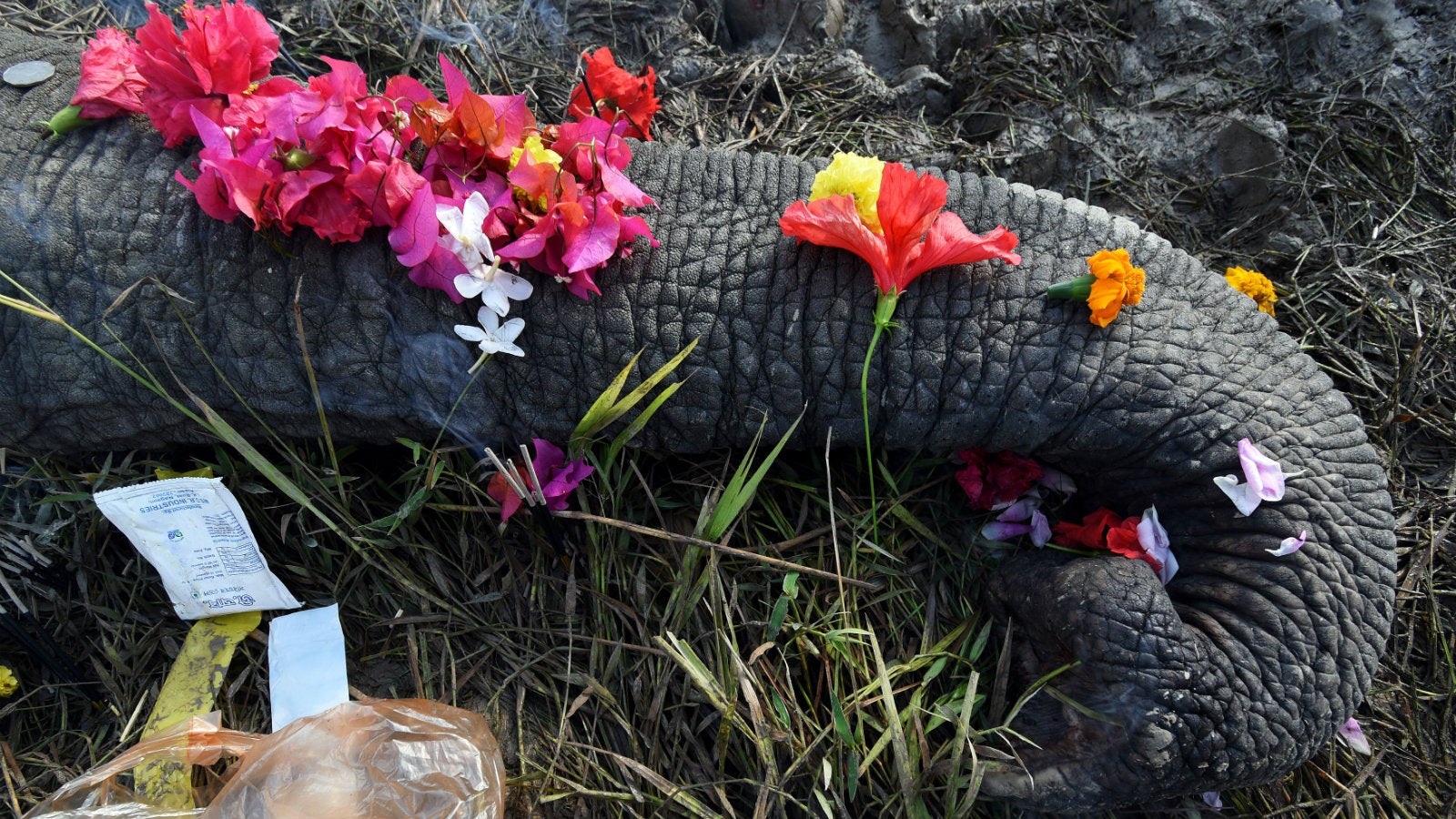Elephants are getting choked, electrocuted, and even bombed to death in India
India’s escalating man-animal conflict is leaving its elephants with no safe home.


India’s escalating man-animal conflict is leaving its elephants with no safe home.
A recent heart-wrenching incident inside Karnataka’s Nagarhole National Park in southern India captures the gravity of the situation. On Dec. 15, a 42-year-old elephant suffocated to death after getting stuck in a seven feet high iron fence. Ironically, the fence was set up by forest authorities to protect the creatures by preventing them from straying into human settlements.
The elephant reportedly managed to cross over and raided a nearby agricultural field, after which it was chased away by villagers. But when it tried to climb over to return to the forest, it was trapped in the fence. “The diaphragm of the elephant got compressed very heavily due to the pressure that fell on it and because of that the choking of the respiratory organs occurred,” KM Narayanaswamy, conservator of forests and director of Nagarahole National Park, told The News Minute website.
The brutal death has sparked heavy criticism from activists who have raised concerns before about the risks of using such fences to keep wildlife away from human settlements.
But these fences are a part of the forest department’s strategy to minimise human-elephant conflict, which has increased as settlements close in on the latter’s diminishing natural habitat and traditional elephant corridors. In several Indian states, elephants straying onto farmland have destroyed crops, prompting the ire of villagers, who rarely receive enough compensation for their losses. They often respond by chasing away elephants with weapons and even fireballs, an approach recently outlawed by the supreme court of India.
India is home to about 60% of the world’s Asian elephants. But data from the environment ministry has shown that on average at least 80 elephants are killed annually by electrocution, poaching, train accidents, and poisoning. India’s 2017 elephant census revealed that since 2012 their population has declined by 10% to 27,312.
The Nagarhole incident is only the latest example this year of the tragic consequences of human-wildlife conflict, coming just a few days after the gruesome death of an eight-year-old elephant who had chewed a bomb left by poachers in Odisha. In October, a pachyderm known as “Rowdy Ranga” was mowed down by a speeding bus in Nagarhole, and a few weeks later, in Odisha again, seven elephants were electrocuted by a low-hanging power line.
Between April and mid-December, 65 elephants were killed in Odisha alone, most of them due to human interventions such as power lines, oncoming trains, and the construction of wells, tanks, and drains, which elephants have fallen into.
The only solution, conservationists say, is to restore elephant corridors and reduce the risk of the animals falling prey to humans. But little has happened on that front.